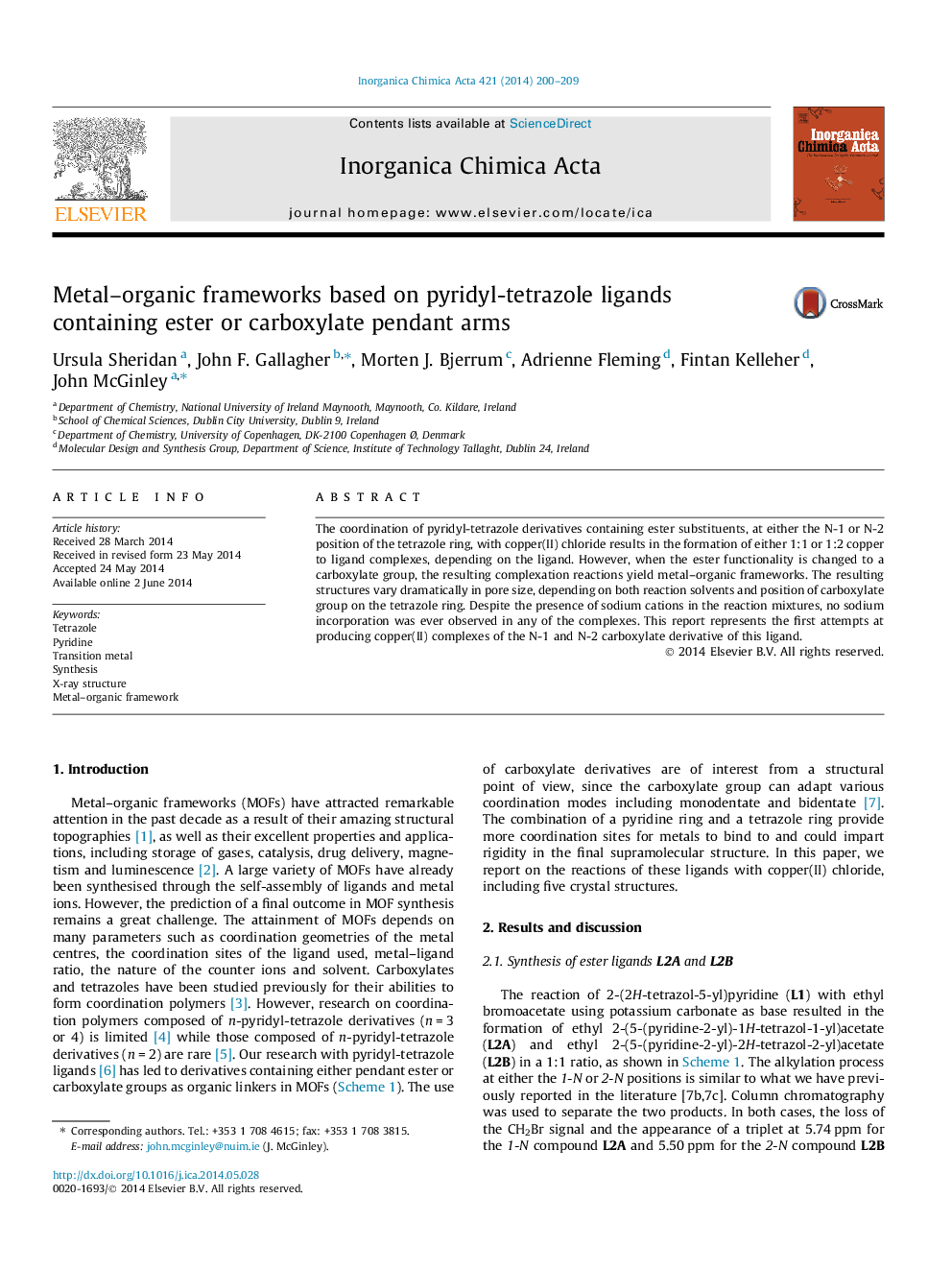| Article ID | Journal | Published Year | Pages | File Type |
|---|---|---|---|---|
| 1308109 | Inorganica Chimica Acta | 2014 | 10 Pages |
•First structural characterisation of copper complexes of pyridyl-tetrazole derivatives containing ester or carboxylate arms.•Formation of coordination polymers and metal–organic frameworks.•Complexes show increase in fluorescence compared to ligands alone.
The coordination of pyridyl-tetrazole derivatives containing ester substituents, at either the N-1 or N-2 position of the tetrazole ring, with copper(II) chloride results in the formation of either 1:1 or 1:2 copper to ligand complexes, depending on the ligand. However, when the ester functionality is changed to a carboxylate group, the resulting complexation reactions yield metal–organic frameworks. The resulting structures vary dramatically in pore size, depending on both reaction solvents and position of carboxylate group on the tetrazole ring. Despite the presence of sodium cations in the reaction mixtures, no sodium incorporation was ever observed in any of the complexes. This report represents the first attempts at producing copper(II) complexes of the N-1 and N-2 carboxylate derivative of this ligand.
Graphical abstractThe coordination of pyridyl-tetrazole derivatives containing ester substituents, at either the N-1 or N-2 position of the tetrazole ring, with copper(II) chloride results in the formation of either 1:1 or 1:2 copper to ligand complexes, depending on the ligand. However, when the ester functionality is changed to a carboxylate group, the resulting complexation reactions yield metal–organic frameworks, which vary dramatically depending on reaction conditions. For example, in complex 4 shown, each copper(II) ion is in a distorted octahedral geometry and a key feature of the molecular structure is that one of the L3A ligand (O1/O2/N12/N22) behaves in both a bridging (using O2/N12/N22) and chelating (via N12/N22) fashion while the second L3A ligand (O3/O4/N32/N42) is only involved in binding through its carboxylate group.Figure optionsDownload full-size imageDownload as PowerPoint slide
